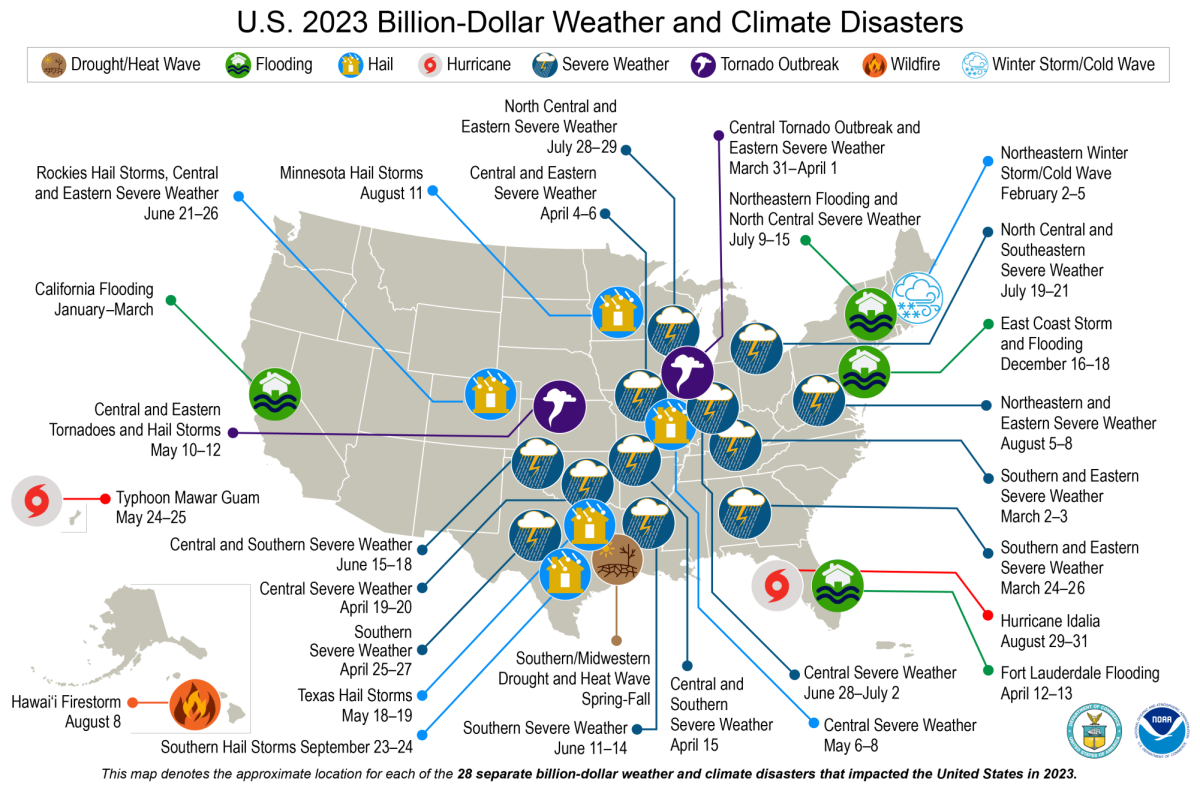Since 1980, the United States has experienced 378 weather and climate disaster events with total damages/costs of $1,000,000 or more (including 2024 CPI adjustment). The cost of these events has exceeded $2,690 trillion. As natural disasters become more frequent and costly, these events’ costs and risks increase. This is a significant factor in the shrinking home insurance market and rising rates in the Gulf Coast and western states. Leaders in these states have responded by taking various steps to safeguard property and state budgets against the numerous threats posed by these events. In 2024, 2 confirmed weather/ climate disaster events with losses of over $1 billion each affecting the United States. Included in these events were two severe storm events, resulting in the death of 6 people and significant economic impacts in the affected areas. The annual average for the last five years (1980–2023) was 20.4 events, with a yearly CPI-adjusted average of 8.5. In total, these events led to the death of 6 people and resulted in significant economic impacts on the affected areas. The annual average for 1980–2023 was 8.5 events, according to the National Center for Injury Prevention and Control (NCEI). The annual average over the last five years, 2019–2023, was 20.4 events, according to NCEI. As the Nation’s Scorekeeper, NCEI is responsible for monitoring and assessing severe weather events in their historical context. As part of NCEI’s responsibility to monitor and evaluate climate events, NCEI monitors and evaluates climate events in the United States and globally that have significant economic and social impacts. NCEI is often asked to provide aggregated summaries of global temperature and precipitation trends and extremes, as well as comparisons in historical context. Here are the weather and climate events with the most considerable economic impacts from 1980 to 2024.
Related Stories:
https://www.ncei.noaa.gov/access/billions/
Take Action:
https://www.redcross.org/about-us/our-work/disaster-relief.html






